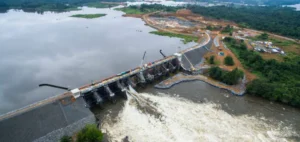Minesto AB, a company specialising in marine energy solutions, has secured loan financing from Fenja Capital. This funding, amounting to SEK 22 million (SEK22mn), will primarily serve to cover working capital requirements related to the company’s current operations and development activities. The agreement reached with Fenja Capital stipulates full repayment of the loan no later than 30 December 2025, accompanied by a monthly interest rate of 1% as well as an arrangement fee representing 4% of the total amount.
Short-term strategic objectives
This financing initiative occurs within a clearly defined strategic context. Minesto is progressing towards several critical milestones in its business development, each of which will differently influence its future funding requirements. By obtaining this loan, the company aims to enhance its financial flexibility, thus allowing a more accurate assessment of the precise scale and nature of future capital needs.
Martin Edlund, CEO of Minesto AB, highlights that the company is entering a critical period marked by progress on multiple fronts. He specifically mentions new commercial partnerships currently under negotiation, site development service offerings, and advances in the first phase of the Hestfjord project. Moreover, Minesto is actively exploring various opportunities for additional “soft funding,” thus diversifying its financial sources and reducing costs associated with traditional capital.
Context of the loan obtained
The loan granted by Fenja Capital was agreed upon terms considered to be market-compliant by the parties involved. Fenja Capital charges a monthly interest rate of 1%, representing a potentially significant total cost over the remaining loan period. Furthermore, the initial arrangement fee of 4% underlines the commercial nature of this operation.
Minesto AB is clearly adopting a proactive approach in managing its financial resources, aiming precisely to identify and anticipate its funding needs for forthcoming business stages. Such operations are frequent in the marine energy sector, where companies face fluctuating business contexts influenced by technical advances, commercial partnerships, and regulatory constraints.
Anticipated developments
Minesto, headquartered in Gothenburg, Sweden, continues simultaneously to pursue commercial validation of its projects, notably the Hestfjord initiative, representing a significant milestone in deploying its marine energy technologies. As the company achieves operational milestones, it will be better positioned to quantify and precisely define medium- to long-term funding needs.
Within the scope of its future activities, Minesto may resort to additional forms of external financing or more structured strategic partnerships. The company therefore does not exclude any avenues likely to reinforce its financial and operational solidity, while maintaining a prudent and proactive approach in identifying its financial resources.






















